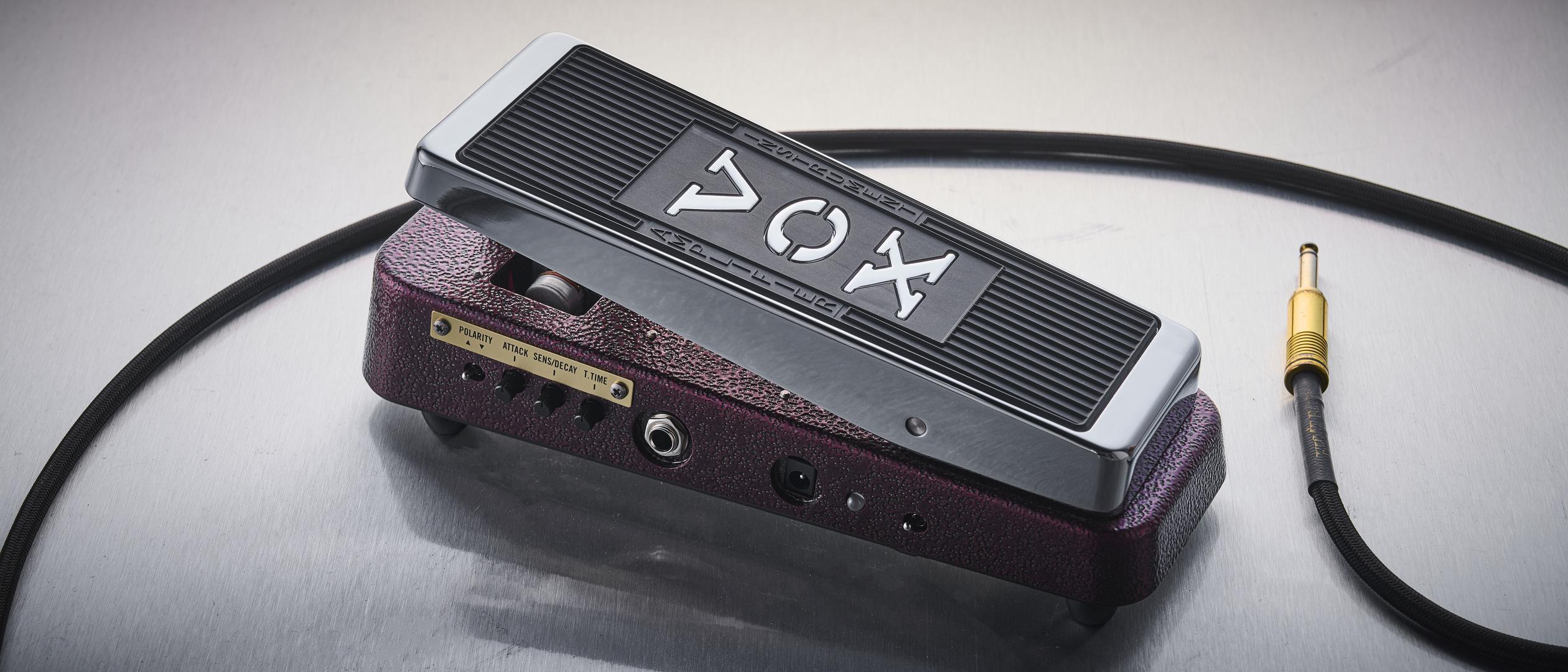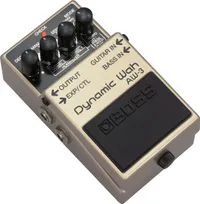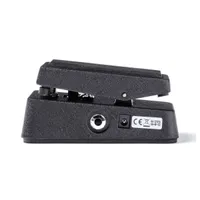MusicRadar Verdict
A great-sounding, versatile wah, offering both manual and automatic modes in a format that is relatively easy to use. Coupled with a rock-solid build and only very minor points of criticism, it's hard to go wrong here.
Pros
- +
A manual mode and two automatic modes.
- +
Easy to use, versatile controls.
- +
Great sound.
Cons
- -
Awkward battery installation.
- -
Screws protrude from base plate.
- -
High 600mA current draw.
MusicRadar's got your back
Name: What is it?
Endlessly addictive and pretty synonymous with the electric guitar, it’s funny to think that Vox initially insisted on the wah-wah pedal being marketed towards trumpet players. Regardless, it was quickly adopted by the likes of Hendrix and Clapton and now, almost 60 years later, with wah having claimed its rightful place as a guitar pedalboard staple, Vox releases the V863-CA Custom Semi-auto Wah. With an envelope generator, envelope follower, and manual control, its 3 modes should make for a versatile wah. Let’s see if it’s any good.
Specs
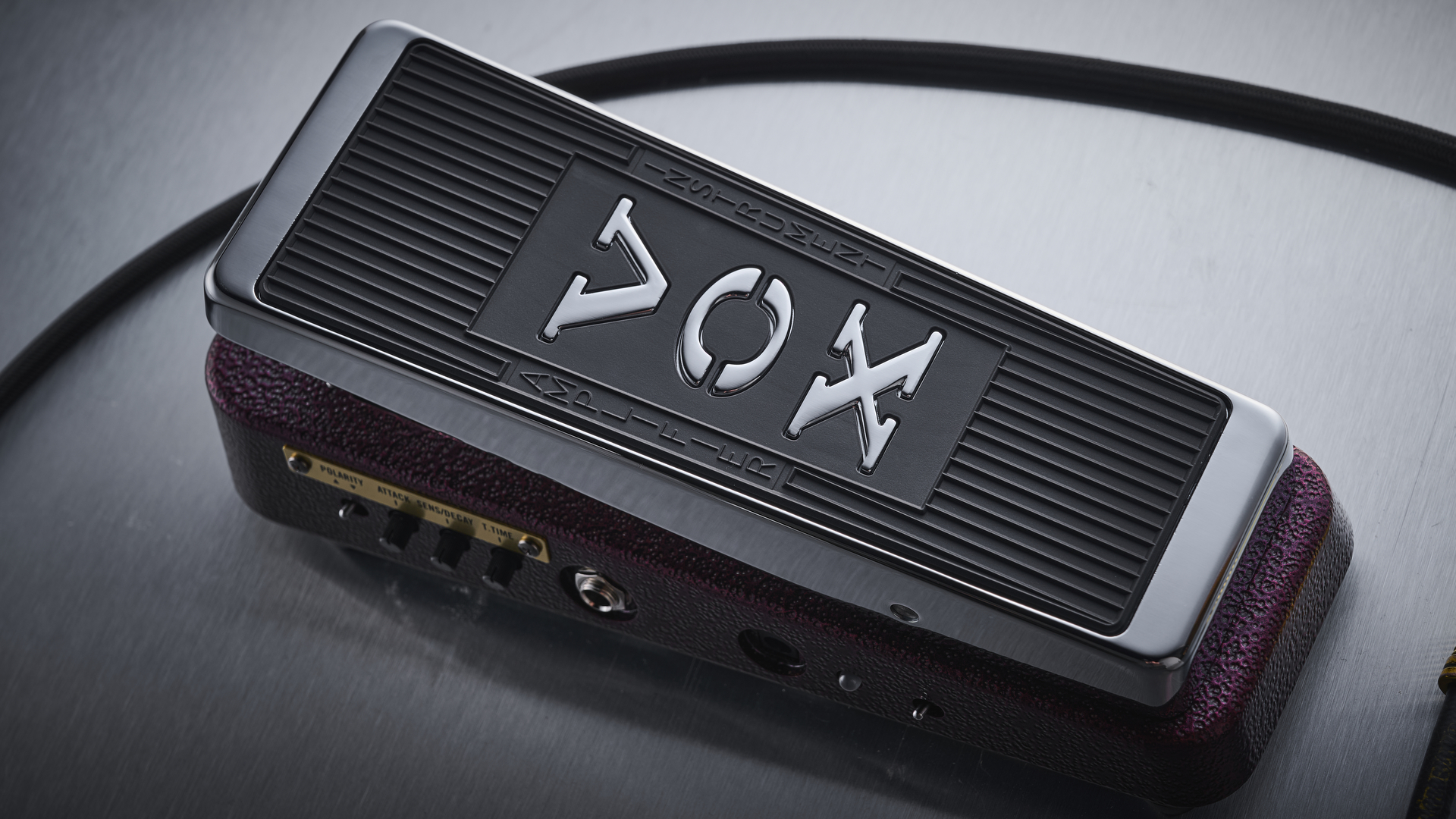
- Launch price: $279/£249/€299
- Type: Wah and auto-wah
- Controls: Attack, Sensitivity/Decay, Time, 3 mode switch, traditional treadle for manual use
- Features: Envelope follower, envelope generator and manual modes
- Bypass: True Bypass
- Power: 9v, 600mA
- Dimensions: 106x254x75mm/4.1"x10"2.9"
- Weight: 3lbs/1.4kg
- Contact: Vox Amplifiers
Build quality
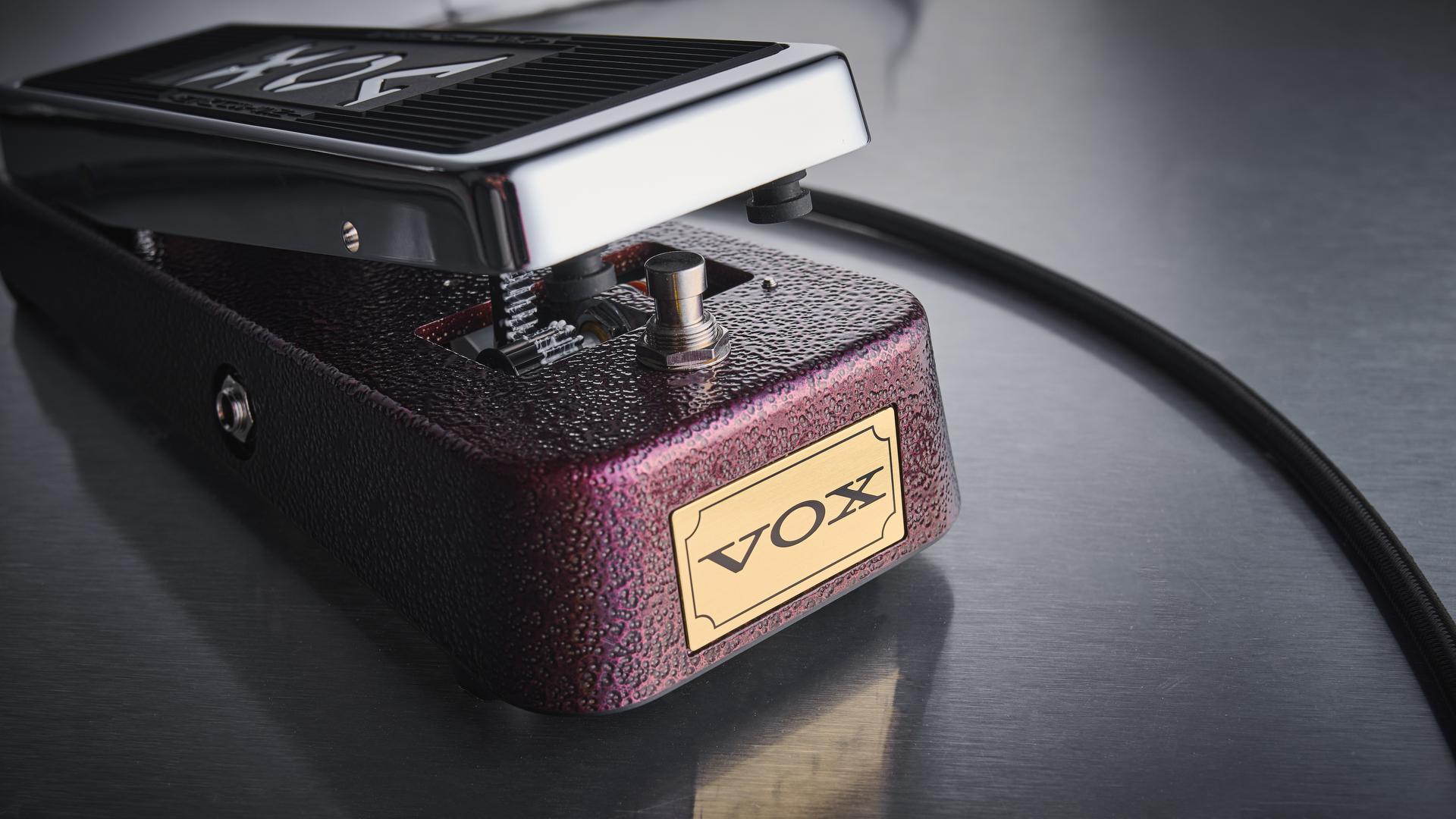
Build quality rating: ★★★★½
Clear upon picking up the pedal is that it's built to last. Being something that we literally lean on for extended periods of time, a wah has to be able to take some punishment. The V863's metal chassis and solid-feeling foot pedal certainly gives the impression that there will be no issues here. The chassis also has a textured finish in a deep red - a rather classy look.
The mini-knobs to control the auto-wah settings maintain this solid feel which is furthered by labeling, set on a metal plate screwed into the chassis. The rubber feet don’t move under pressure and are easily removed for those who want to place their wah on a pedalboard.
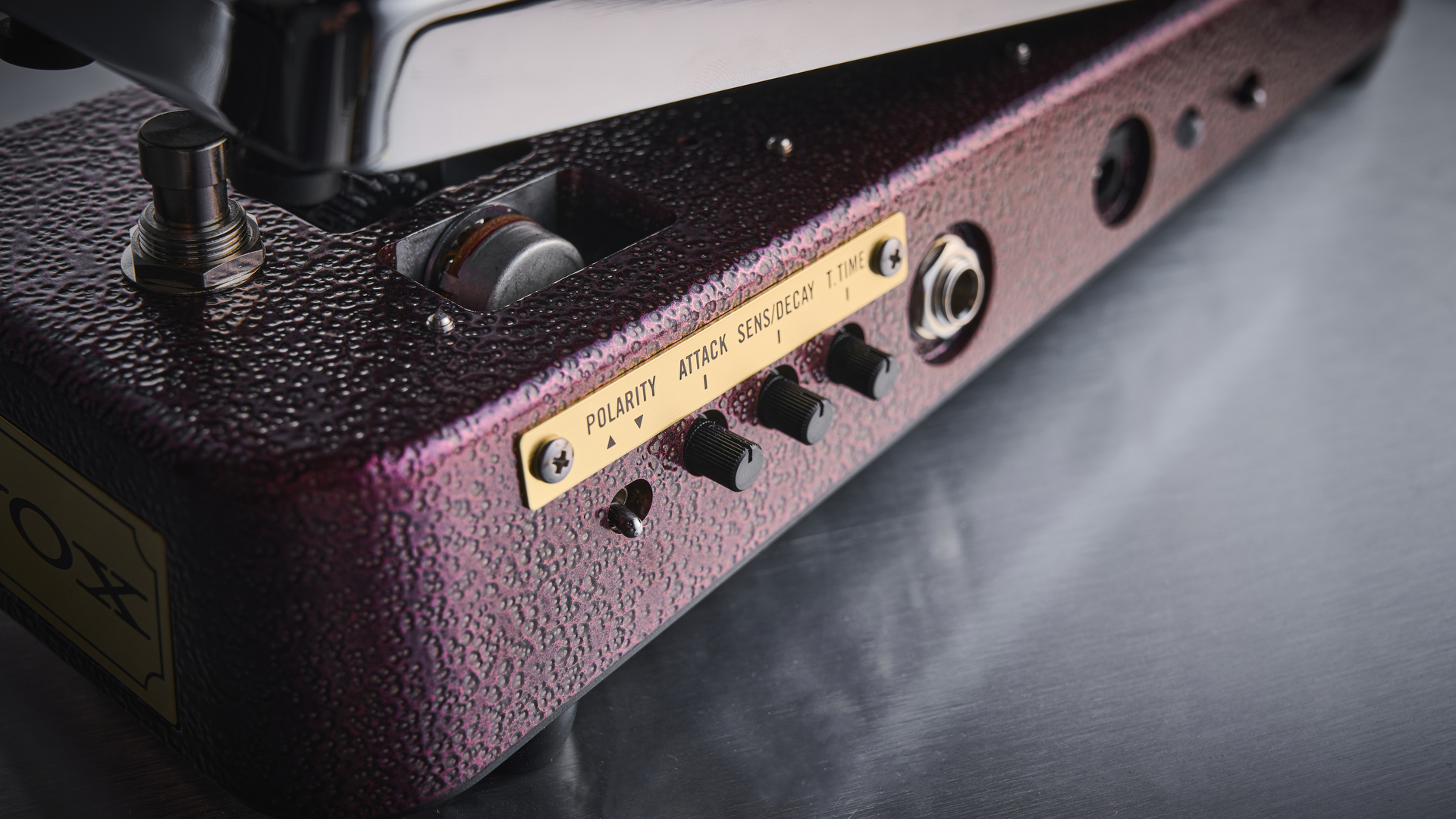
Upon removing the feet with the screws reattached, the heads still protrude from the base plate, which might be a minor inconvenience for those looking to velcro it to a board. The base plate also needs to be completely removed in order to place a battery inside the enclosure, which is a little annoying. Even considering this, I am still appreciative of the option to run it on a battery.
Speaking of power, the Vox V863 is listed as drawing 600mA in the manual, which is not something every pedalboard power supply can handle without doubling up a couple of outputs, so it is worth keeping that in mind.
Usability
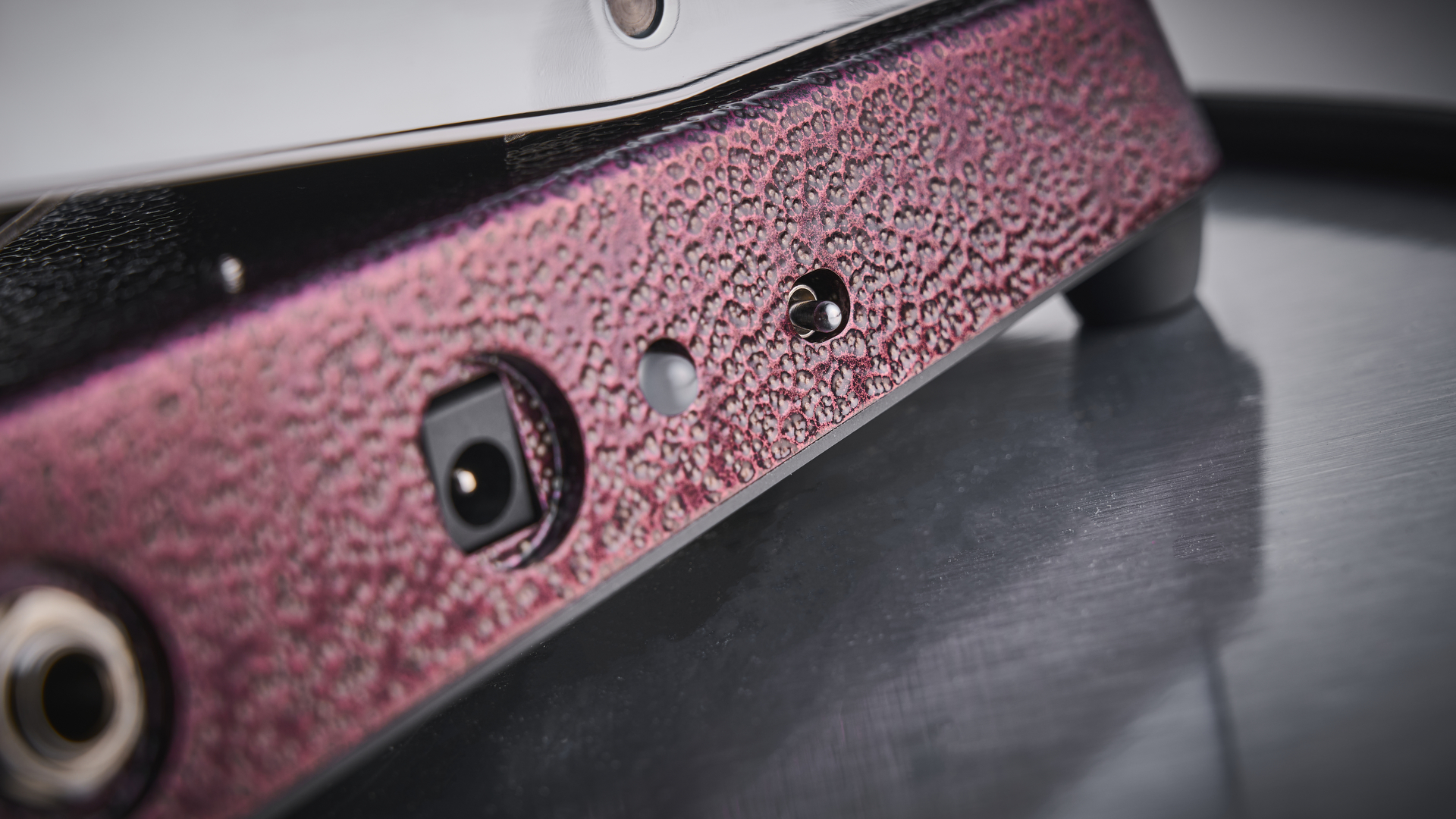
Usability rating: ★★★★½
Want all the hottest music and gear news, reviews, deals, features and more, direct to your inbox? Sign up here.
A very intuitive experience, almost a plug-and-play device
As with most wahs, the V863-CA is a simple thing to set up. Plug your guitar in, output to an amp, and toe-down the treadle to turn it on. When on, the auto-wah mode will be engaged until you move the foot pedal, at which point it changes to manual mode. The various modes enabled by the mode switch are labeled in detail on the base plate, resulting in a very intuitive experience, and almost make this a plug-and-play device.
The minor thing that gets in the way of this is the lack of noting that aforementioned, relatively high power draw on the chassis. With no way of knowing without diving into the manual, I can see situations where a user under-powers the pedal and is left wondering why it doesn’t sound quite right.
Having said this, I did check the pedal on a 500mA output from my Fender Engine Room power supply (in addition to the 600mA used in the rest of the test), and it worked exactly as it should. So I suspect there is a fair bit of leeway built in here, but I would hesitate to go against the manufacturer's notes like this if you are looking for something to be solidly reliable during a gig.
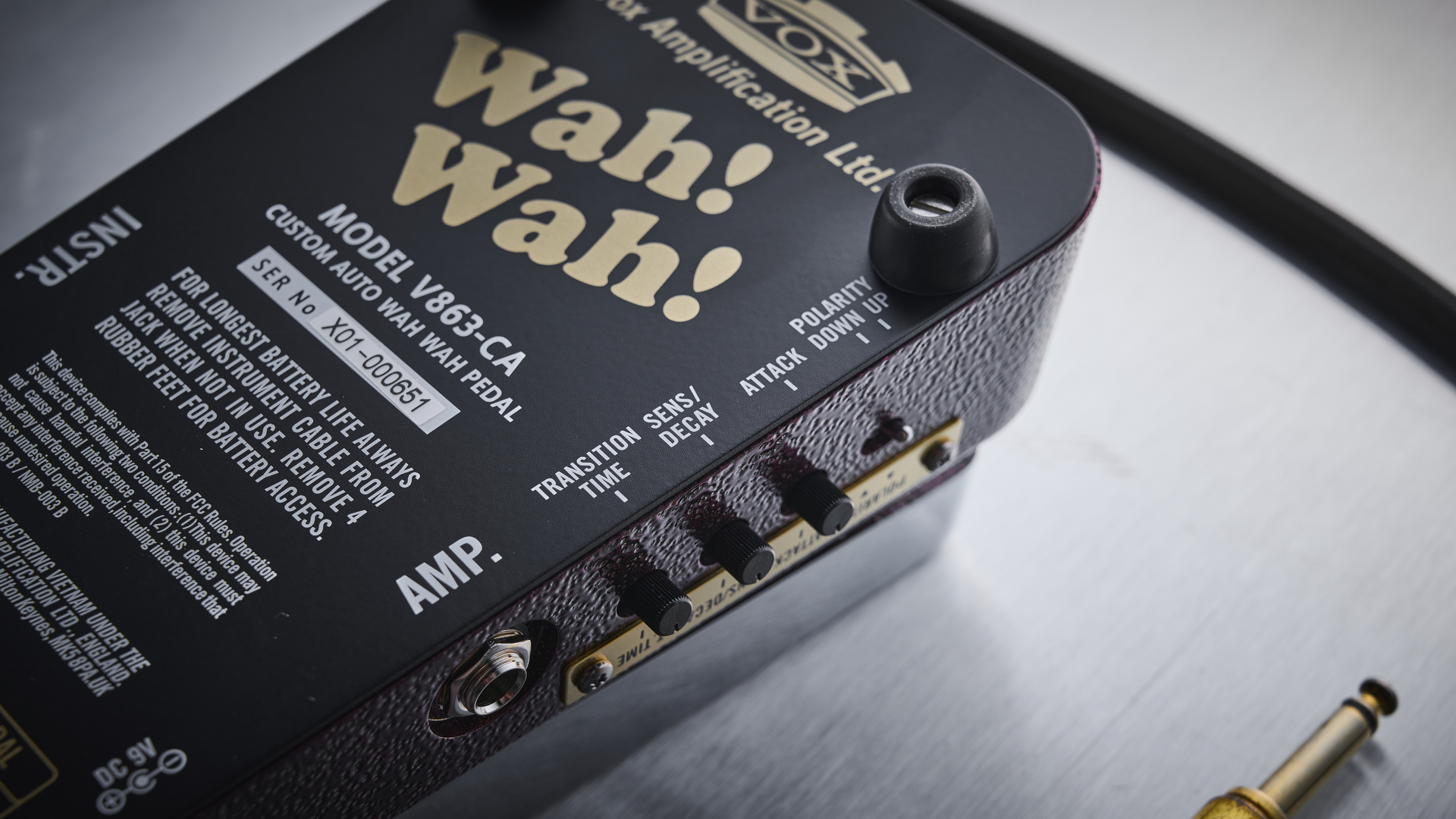
While I am being picky, the travel of the pedal itself is quite small compared to something like a Dunlop Cry Baby Wah. I would prefer a little more, but this is down to personal preference.
Adjusting the sound of the auto-wah is a breeze, with controls that are well labeled and easy to understand if you are familiar with wah terminology. The only bespoke one is the Transition Time between control that adjusts how fast the change between manual and automatic mode occurs, but this is well explained.
I love a notch in the centre of a control too. It’s an intuitive way of letting the player know when they are in the middle of a sweep, and a simple method by which the user can repeat setting adjustments, so I am glad to see such notches here.
Another particularly nice touch is how the Envelope Follower and Envelope Generator functions are explained on the base plate. In follower mode, the pedal will ‘follow’ the dynamics of the player's attack to control the wah, whilst in generator mode, the wah sweep will trigger regardless of the strength of the note played. Altogether, we have a well-thought-out and easy-to-use pedal.
Sounds
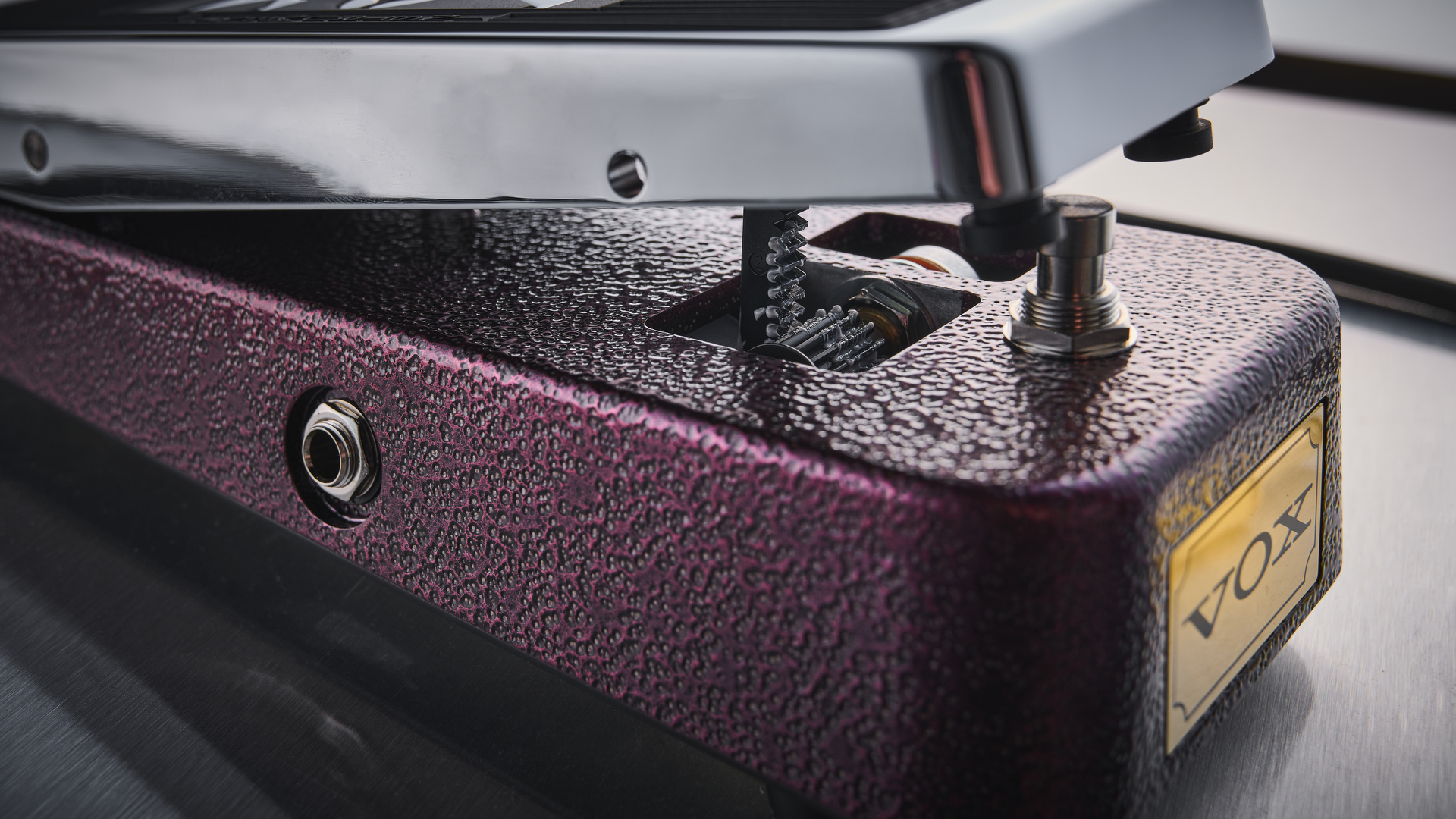
Sounds rating: ★★★★½
Despite my criticism of a shallow physical sweep in using the pedal manually, this is not the case when it comes to the sound. Toe-down presents the bitey, cutting sound that a wah is duty bound to provide, and similarly, heel-down does the woolly thing it is supposed to, in what is a wholly useable and rewarding sweep.
Unlike some other models, the Vox V863-CA does what it does without overshadowing the tell-tale characteristics of my Telecaster, Les Paul, and Hot Rod Deluxe IV I was using throughout testing. The other thing some competitors are notorious for is tone suck, even with the pedal off. Not a problem here. There is a tiny bit of high-end loss, but nothing that would be noticeable outside of an A-B test.
Setting it up with my Dunlop Jimi Hendrix '69 Band of Gypsy’s mini fuzz, the Vox V863-CA is addictive and endless fun. I spent a long time playing through wah-soaked, fuzzy Jimi Hendrix licks before going clean and cranking out some funky chords higher up the neck, with the pedal handling it all exactly how it should.
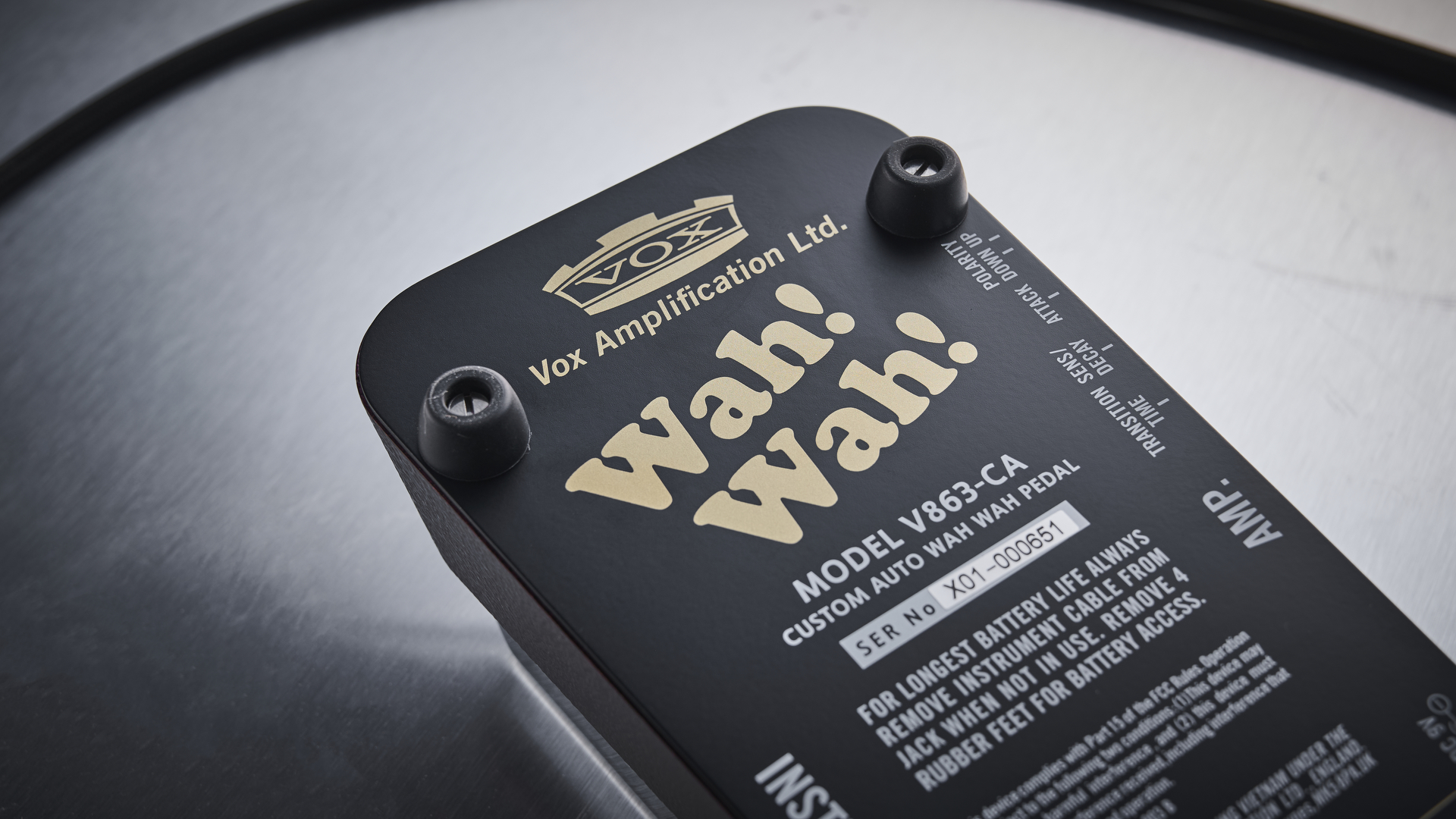
Getting into the auto-wah modes—the hero features of the pedal—the envelope follower mode has that same pleasing sweep. Designed to ‘follow’ the dynamics of my playing, it does exactly that with the sensitivity control proving useful to tweak how it reacts. It's hard to trigger on its lowest setting and triggering pretty much all the time on the highest.
Having this amount of control across the sensitivity is particularly useful when it comes to guitars with differing outputs. I was able to tweak this setting to reflect the output differences between my Les Paul and my Telecaster with ease.
The attack control was equally useful. Set fast it's an almost immediate progression through the sweep, and it can get plenty slow enough for the vast majority of uses. I would, however, have liked a little more play on the slower end of the spectrum to create an even more laid-back style of wah.
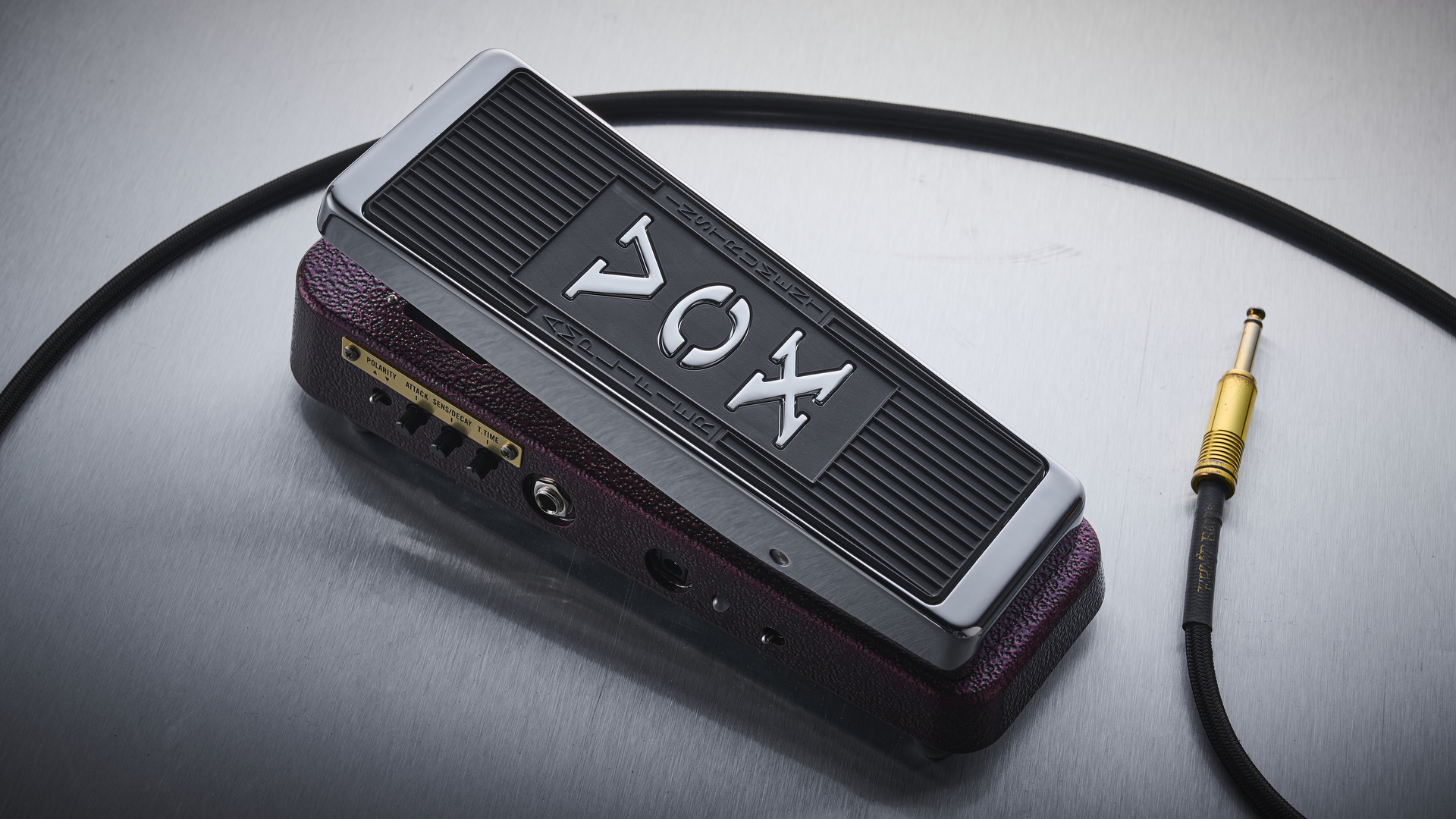
I much prefer the polarity traveling from heel-to-toe, but having the option to switch it is much appreciated. Going toe-to-heel has to be treated carefully, as spending too long in that piercing toe-down position is a little painful, but that’s why we have the Sensitivity and Attack controls. Setting these properly makes this a fun alternative, which I found particularly suited to playing chords at the more mellow side of funk guitar.
The Envelope Generator mode is much the same, with the exception being that it triggers constantly, without consideration of playing dynamics. This is probably my favorite setting, with an ever-prominent wah, giving my tried-and-tired pentatonic licks a new lease of life.
The Sensitivity control switches to ‘Decay’ in this mode, controlling how quickly the wah returns to its starting position. This offers a way to get that more laid-back wah feel I referred to earlier, and is particularly enjoyable with slowed-down blues riffs. All in all, a great-sounding pedal.
Verdict
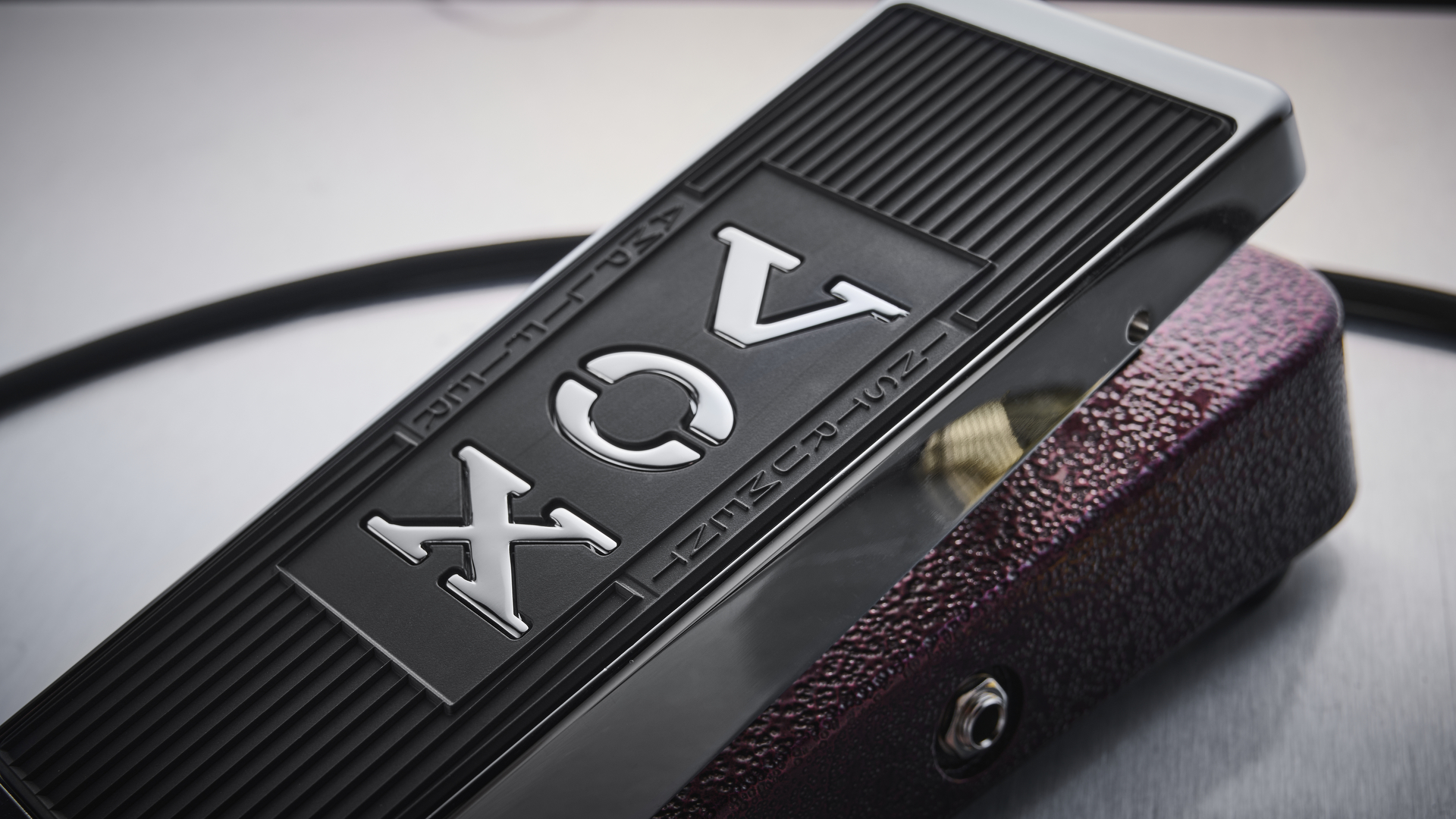
The Vox V863-CA certainly qualifies as more than just a good wah
There are few pedals that I find quite as much fun as a wah. I can't help but smile when using a good one, and the Vox V863-CA certainly qualifies as more than just a good one.
The general tone doesn't completely overwrite the guitar's core characteristics, whilst still providing that wah-flavoured goodness. The automatic modes work well, and there is a lot of versatility to be found within them.
The minor criticism's such as the base plate removal, high current draw and want for a slower option in the attack setting, are just that. Minor. If you are in the market for a Wah pedal and want something that does both manual and auto wah, you can't go wrong here.
MusicRadar verdict: A great-sounding, versatile wah, offering both manual and automatic modes in a format that is relatively easy to use. Coupled with a rock-solid build and only very minor points of criticism, it's hard to go wrong here.
Test | Results | Score |
|---|---|---|
Build quality | Great looks and a tank like construction, shame about he protruding screws from the base plate | ★★★★½ |
Usability | Despite a number of modes, the pedal is fairly simple to use. The only down side being the lack of note of that high current draw on the chassis | ★★★★½ |
Sounds | A sound that doesn;t take over your guitar and amps characteristics, whilst still providing classic wah. | ★★★★½ |
Overall | A great sounding and versatile pedal, capable of covering a lot of ground in both manual and automatic modes | ★★★★½ |
Also try
Boss AW-3 Dynamic Wah $153/£129/€157
Boss has a pedal for everything - its AW-3 provides for all your auto-wah needs with a few extra parameters compared to the Vox V863-CA, an the option to add an expression pedal for some manual control.
Read more: Boss Aw-3 Dynamic Wah Review
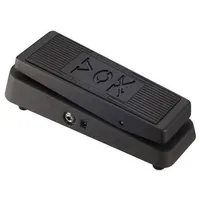
Vox V845 Wah $149/£65/€65
An affordable classic, and for many players the first wah-wah they will own. Without the addition of an auto function, it is a much simpler pedal than the Vox V863-CA.
Dunlop CBM95 Crybaby Mini Wah $119/£129/€117
If you want that manual control, but in a mini format, then this is well worth a look. It lacks the auto function, but gives that classic sound while taking minimal pedal board real estate
Read more: Dunlop CBM95 Crybaby Mini Wah Review
Hands-on videos
Vox
Noisegate

Pete cut his teeth as a guitarist by spending over a decade playing in both function and original bands whilst teaching during the week. He now uses this experience combined with degrees in Music and Web Design, plus a general addiction to all things guitar gear, to write reviews for MusicRadar and Guitar World. When not experimenting with his pedalboard, he will spend any extra time he has perfecting his extensive coffee-making setup.
You must confirm your public display name before commenting
Please logout and then login again, you will then be prompted to enter your display name.
